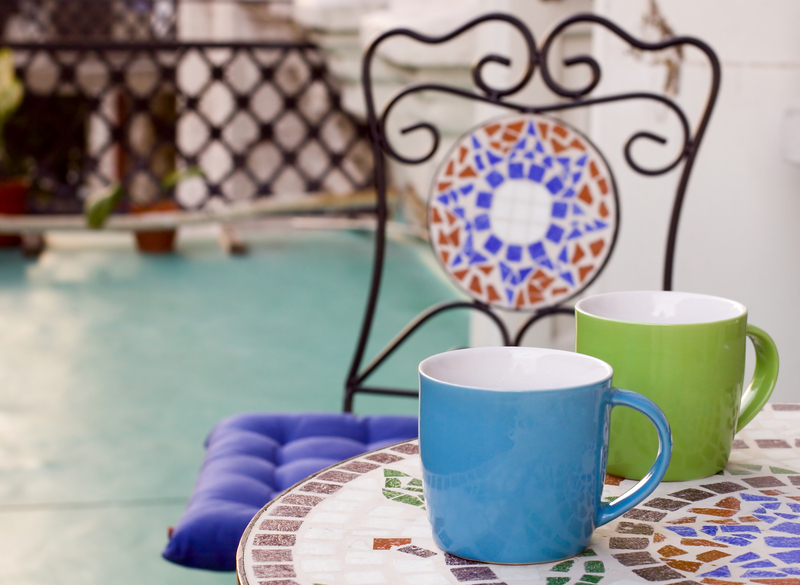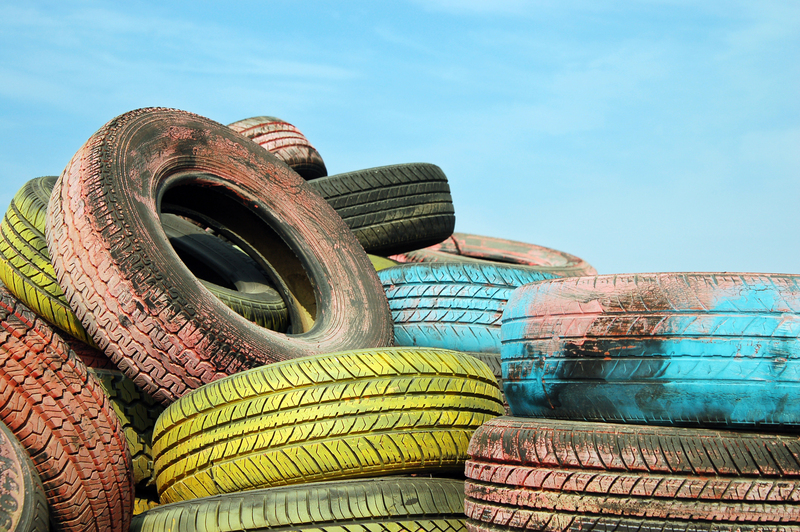Essential Tips for Tackling Hoarder Clean Up and Decluttering
The challenge of hoarder clean up and decluttering is a task that requires compassion, planning, and determination. When faced with the overwhelming accumulation of items and clutter in a home, the process may seem daunting. However, with the right approach, it is possible to restore safety, order, and well-being to any living space. In this comprehensive guide, you'll find actionable tips and expert advice for handling hoarding cleanup, understanding the emotional aspects, and maintaining results in the future.
Understanding Hoarding Disorder
Before diving into strategies for effective hoarder cleaning, it's important to recognize that hoarding is not merely about messiness. It is a recognized psychological disorder that often stems from anxiety, trauma, or overwhelming guilt. Hoarding involves persistent difficulty discarding or parted with possessions, regardless of their actual value.
- Hoarding can endanger health and safety.
- The clutter often causes isolation, depression, and relationship issues.
- Underlying emotional and mental health conditions are often present.
Addressing hoarder clean up and decluttering requires a sensitive, non-judgmental approach that respects the individual's dignity.

Preparing for the Hoarder Clean Up Process
Assemble the Right Support Team
Tackling a hoarding clean up is rarely a job for one person. Enlist trustworthy friends, family members, or even professional hoarding cleanup services who can offer both physical and emotional support.
- Include only people the individual trusts.
- Consider hiring mental health professionals or professional organizers experienced in hoarding situations.
- Ensure everyone is briefed on the plan and approaches the project without criticism.
Set Realistic Goals and a Timeline
Attempting to
- Start with a specific room, zone, or even a corner.
- Establish a realistic timeline for each area.
- Celebrate small victories to maintain momentum.
Gather Essential Cleaning Supplies
A well-stocked cleaning kit will help ensure efficient and safe hoarder cleanup. Items needed include:
- Heavy-duty garbage bags and boxes for sorting
- Protective gear: gloves, masks, goggles, and closed shoes
- Disinfectants, cleaning cloths, brooms, dustpans, and mops
- First-aid kit for minor injuries
Having these items ready prevents delays and keeps everyone safe during the process.
Step-by-Step Strategy for Hoarder Clean Up
1. Conduct a Safety Assessment
Safety should always be prioritized. Some homes with extreme hoarding may present hazards such as mold, pests, fire risks, or structural issues. Assess the site for possible risks before starting.
- Check for blocked exits or walkways and clear them first.
- Identify sharp objects, broken glass, or hazardous materials.
- If significant biohazard (animal waste, mold growth, etc.) is present, consult with professional biohazard cleaning services.
2. Sort Items Methodically
Adopt the "Three-Box Method" for sorting items:
- Keep - Essential and genuinely valuable items.
- Donate/Sell - Items in good condition that others can use.
- Dispose - Broken, expired, or inappropriate items that cannot be reused.
Guide the individual through each decision. Be patient; emotional attachments to possessions are common.
3. Dispose of Junk Responsibly
Plan for responsible disposal:
- Rent a dumpster if necessary for large quantities.
- Sort recyclables as appropriate.
- Arrange for donation pick-ups with local charities.
- For hazardous or electronic waste, contact your city's waste management department.
4. Deep Clean and Sanitize
Once clutter is removed, deep clean all surfaces, floors, and fixtures. Pay special attention to areas with moisture or signs of infestation.
- Disinfect kitchens, bathrooms, and food storage areas.
- Vacuum and mop floors; clean windows and walls.
- Check for mold and remediate as needed.
Addressing the Emotional Aspect of Decluttering
Cleaning a hoarder's home requires more than muscle; it demands sensitivity and understanding. Hoarding isn't about laziness but often involves coping mechanisms for loss, anxiety, or trauma.
- Practice active listening and empathy. Allow the person to express their feelings without interruption.
- Encourage, don't coerce. Allow them to guide the process wherever possible.
- Offer reassurance. Remind them that support is available and that their well-being is the priority.
Counseling and therapy are often invaluable during and after the cleaning process.
Long-Term Strategies for Preventing Hoarding Relapse
Decluttering a hoarded home is a significant achievement, but maintaining a clutter-free space requires ongoing effort. Here are key strategies:
- Create organizational systems. Shelves, bins, and clear labels help maintain order.
- Adopt a "one-in, one-out" rule. For every new possession, remove an old one.
- Schedule regular clean-ups. Plan brief, consistent decluttering sessions.
- Stay connected with professional or peer support groups.
- Monitor for emotional triggers that may cause old habits to resurface, and seek help if needed.
Remember, decluttering is a journey, not a one-time event.
When to Hire a Professional Hoarder Clean Up Service
Sometimes, the scale of a hoarding situation is more than friends and family can safely manage. Consider hiring a specialized hoarder clean up company if:
- The home poses serious safety or health hazards.
- There is extensive mold, pest, or biohazard contamination.
- The homeowner experiences severe anxiety or distress at the idea of decluttering.
- A fast turnaround is required (e.g., for property sales or rental).
Professional hoarder cleaning experts are equipped to handle complex situations efficiently, compassionately, and discreetly.
Tips for Supporting a Loved One with Hoarding Tendencies
- Communicate with kindness, not confrontation. Use "I" statements and express concern for their safety and health.
- Encourage, don't force. Let them make decisions about their belongings wherever possible.
- Suggest therapy or counseling. Professional support is often crucial for recovery.
- Avoid shaming or demeaning language.
- Focus on progress, not perfection.
Being supportive and non-judgmental often yields the best long-term results.
Resources and Tools for Hoarder Decluttering Success
There are numerous resources to assist with hoarder clean up and decluttering:
- Books: "Buried in Treasures", "The Life-Changing Magic of Tidying Up"
- Websites: The International OCD Foundation, Hoarding Cleanup, Children of Hoarders
- Support Groups: Local therapy groups, Clutterers Anonymous, online forums
- Professional Services: Hoarding cleaning specialists, licensed therapists, organizational experts
Strong support networks and the right information make the journey smoother and more successful.

Conclusion: Reclaiming Spaces, Restoring Lives
Facing hoarder clean up and decluttering is a significant undertaking, both practically and emotionally. By approaching the process with respect, patience, and a clear plan, it's entirely possible to revive any home. Remember, true transformation occurs when the physical clean-up is accompanied by ongoing emotional support and preventive strategies.
Whether you're a family member, friend, or professional, your compassion and dedication can change lives. Be patient, seek help when needed, and celebrate every step forward with hope and positivity.
Frequently Asked Questions (FAQs) about Hoarder Clean Up
-
What are the first steps in hoarder clean up?
Assess safety hazards, assemble a support team, and create a clear action plan before beginning the decluttering process. -
How much does professional hoarding cleanup cost?
Costs vary widely based on the severity and size of the project but may range from several hundred to thousands of dollars. -
How do you help a hoarder let go of items?
Use compassion and encourage involvement in decision-making. Never force or rush choices, and consider professional therapy for deeper issues. -
Is hoarding clean up the same as regular junk removal?
No. Hoarder clean up involves emotional and psychological complexities, and requires a sensitive, step-by-step approach. -
What agencies can help with hoarding cleanup?
Look for local health departments, social services, hoarding task forces, and private hoarding cleaning professionals for additional support.
By equipping yourself with the right knowledge and resources, hoarding clean up and decluttering can become an achievable, life-changing journey for all those involved.